Abstract
In 35 patients maintained solely on liquid formula diets, chromic oxide has been evaluated as an internal standard for balance studies that require stool collections. In 28 patients the excretion of chromic oxide was ideal: steady states were attained in which mean daily output was 90% (or more) of mean daily intake. In these patients corrections for fecal flow could validly be applied.
In patients who excreted the marker ideally, the availability of chromic oxide balance data made possible the calculation of pool sizes and turnover rates of unexcreted intestinal content. These indexes bore little relationship to the usual clinical descriptions of bowel habits. In some patient who had daily bowel movements, pool sizes were very large and daily turnover was small, i.e., a large proportion of the colonic contents was not excreted for surprisingly long periods. It is critically important for investigators to recognize this possibility when carrying out balance studies for fecal constituents that may be altered by bacterial action within the gut lumen: for instance, in 6 patients a significant inverse correlation was found between daily fecal turnover and degradative losses of large amounts of dietary β-sitosterol.
7 of 35 patients failed to attain the ideal steady state of chromic oxide excretion. These patients would not have been singled out if an internal standard had not been used. In such patients balance studies that require analysis of fecal constituents must be interpreted with great caution, since the constituents in question may be handled in the same nonideal fashion as the internal standard.
Full text
PDF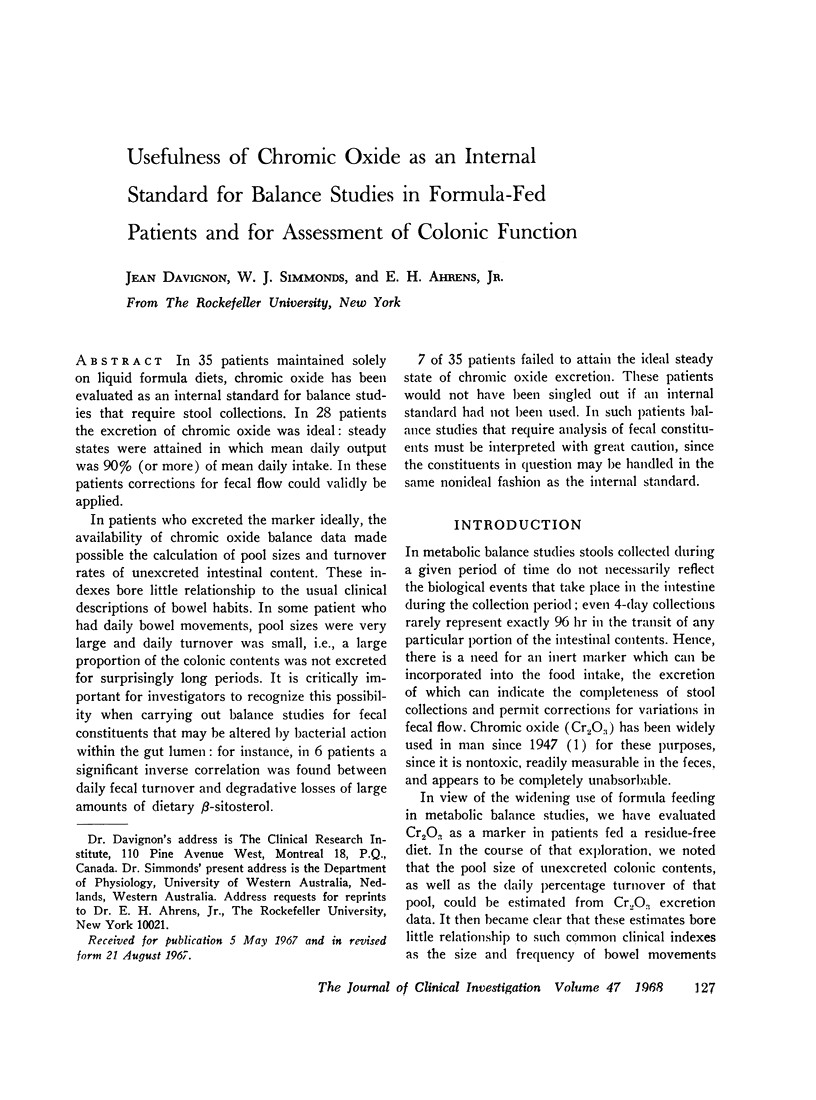
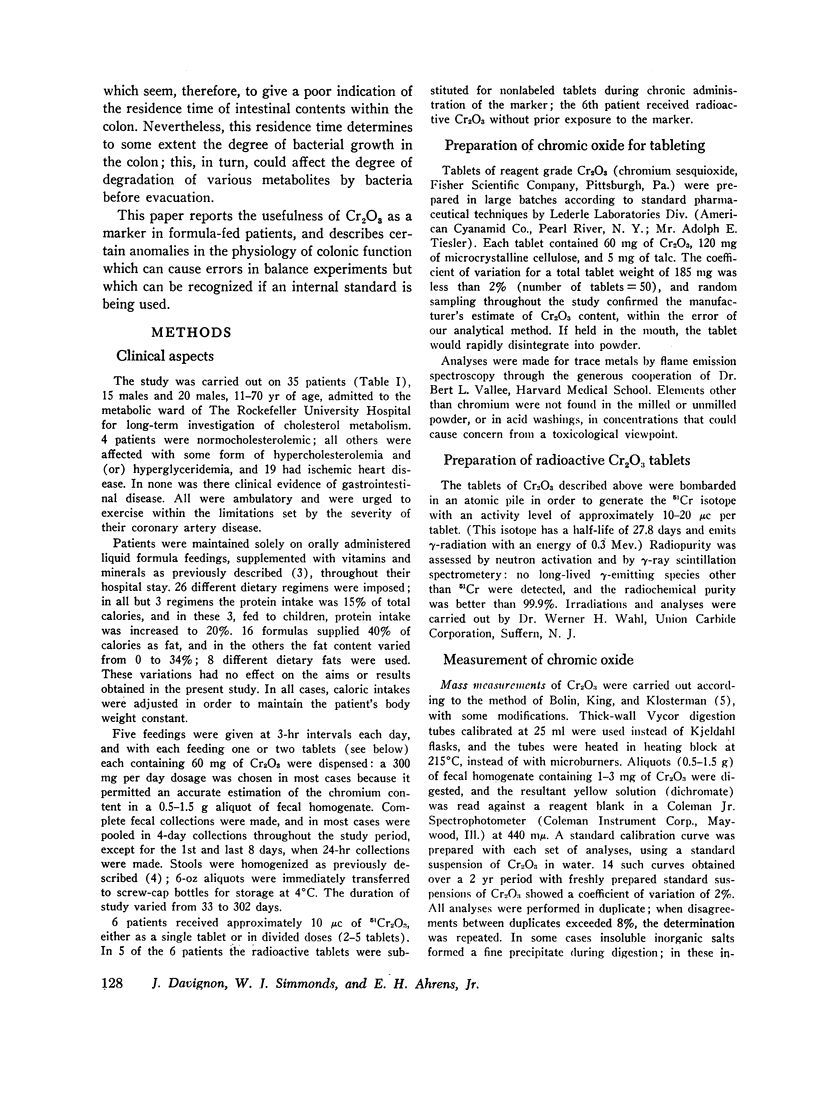
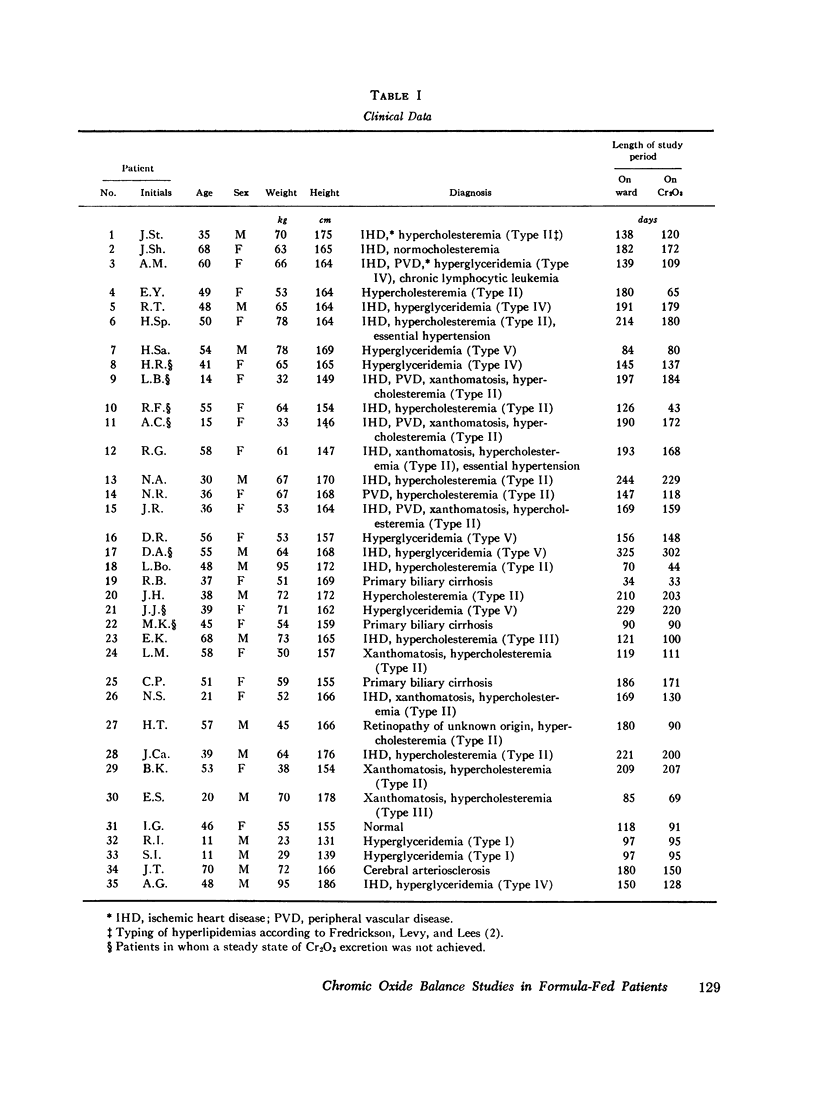
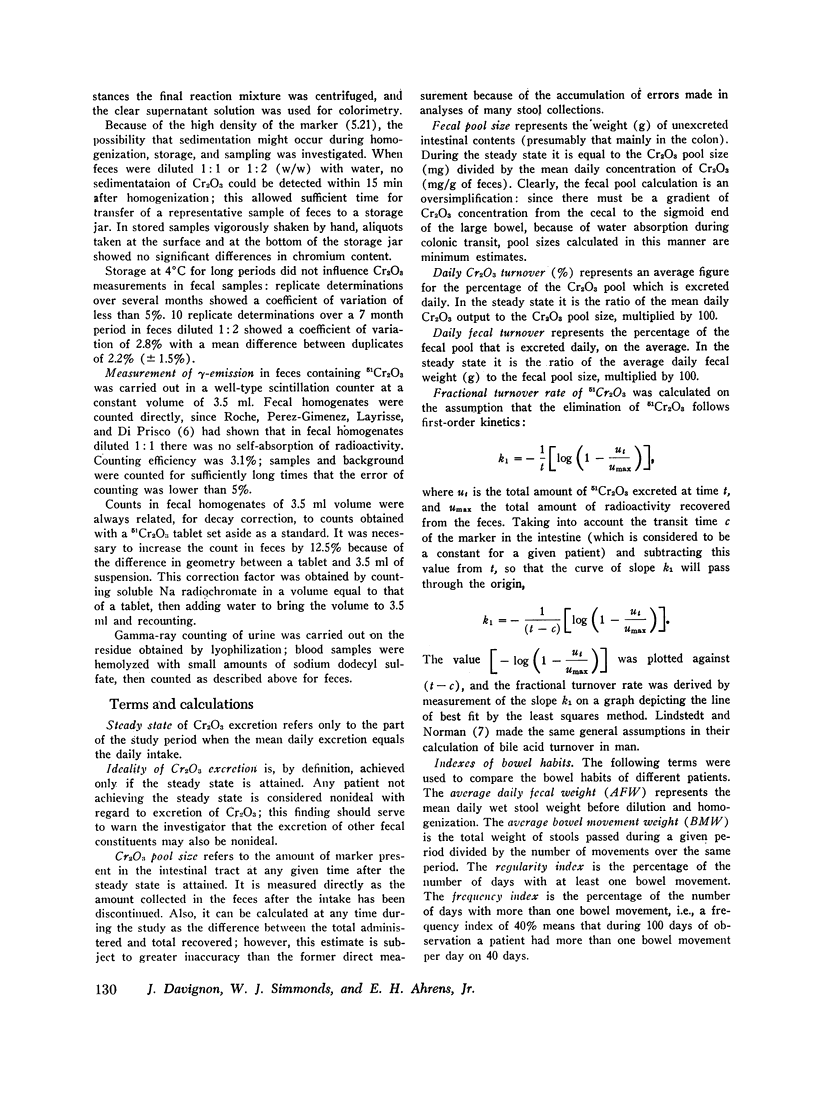
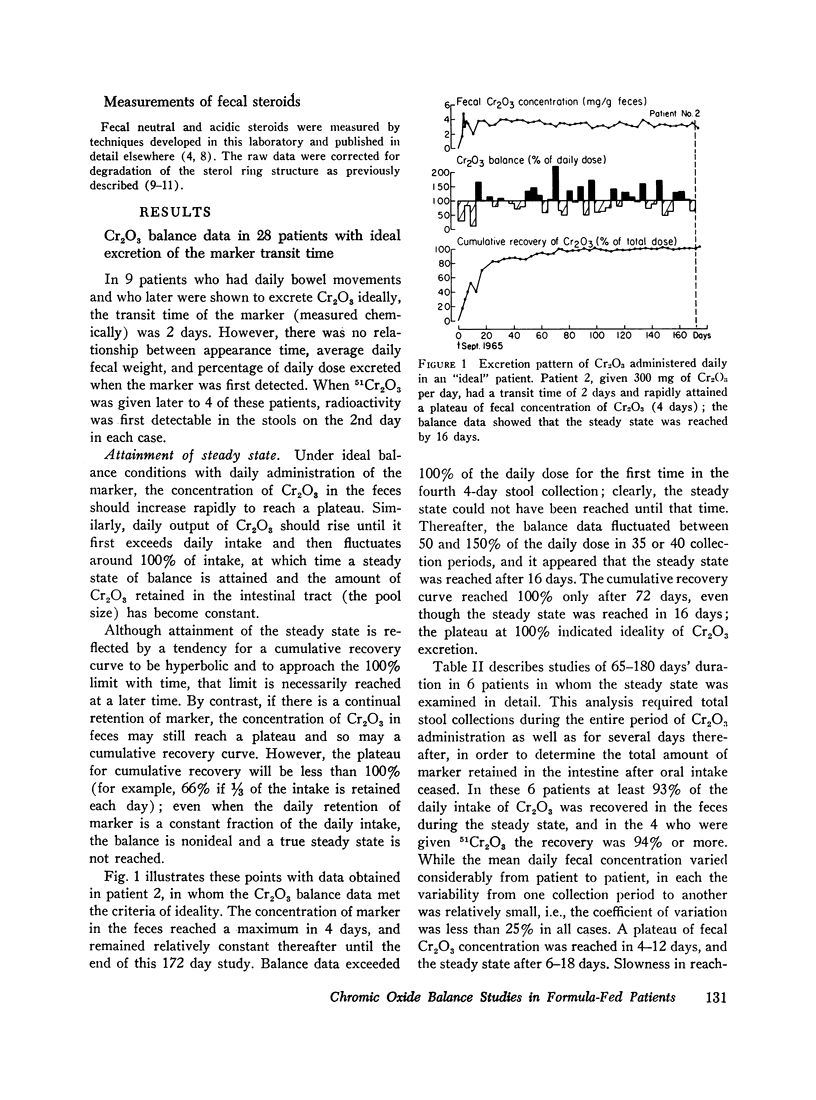
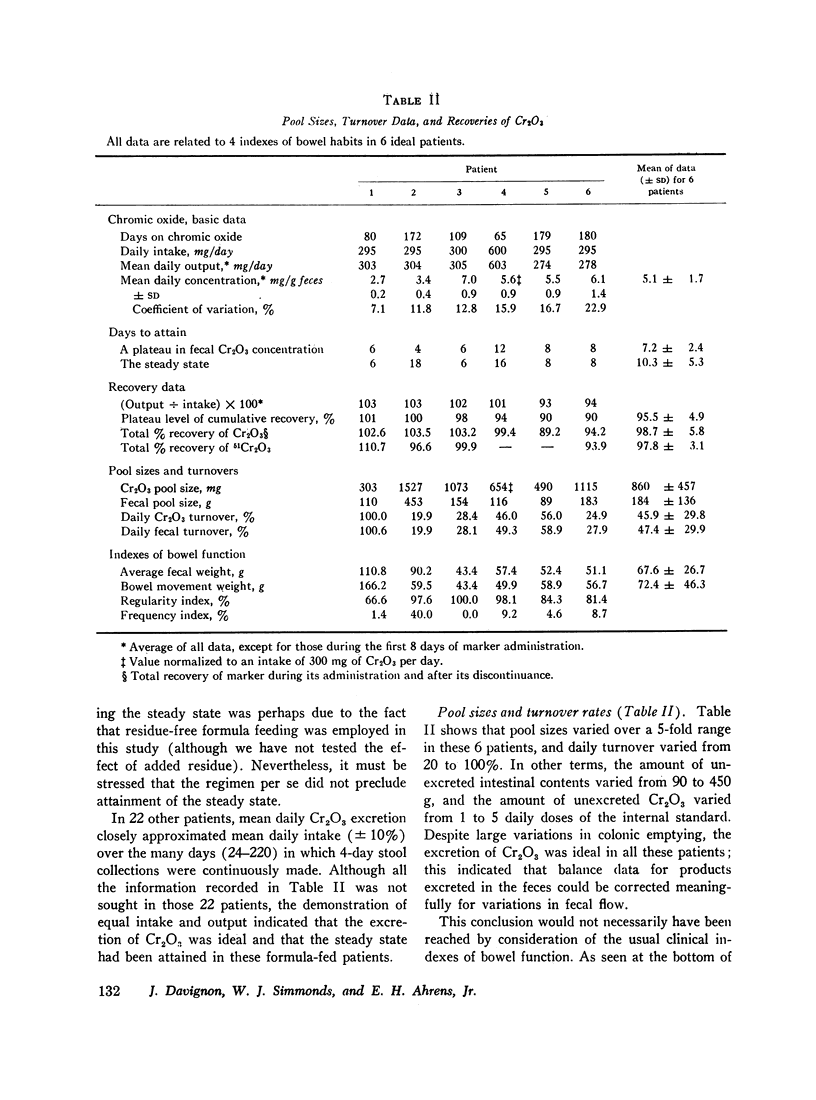
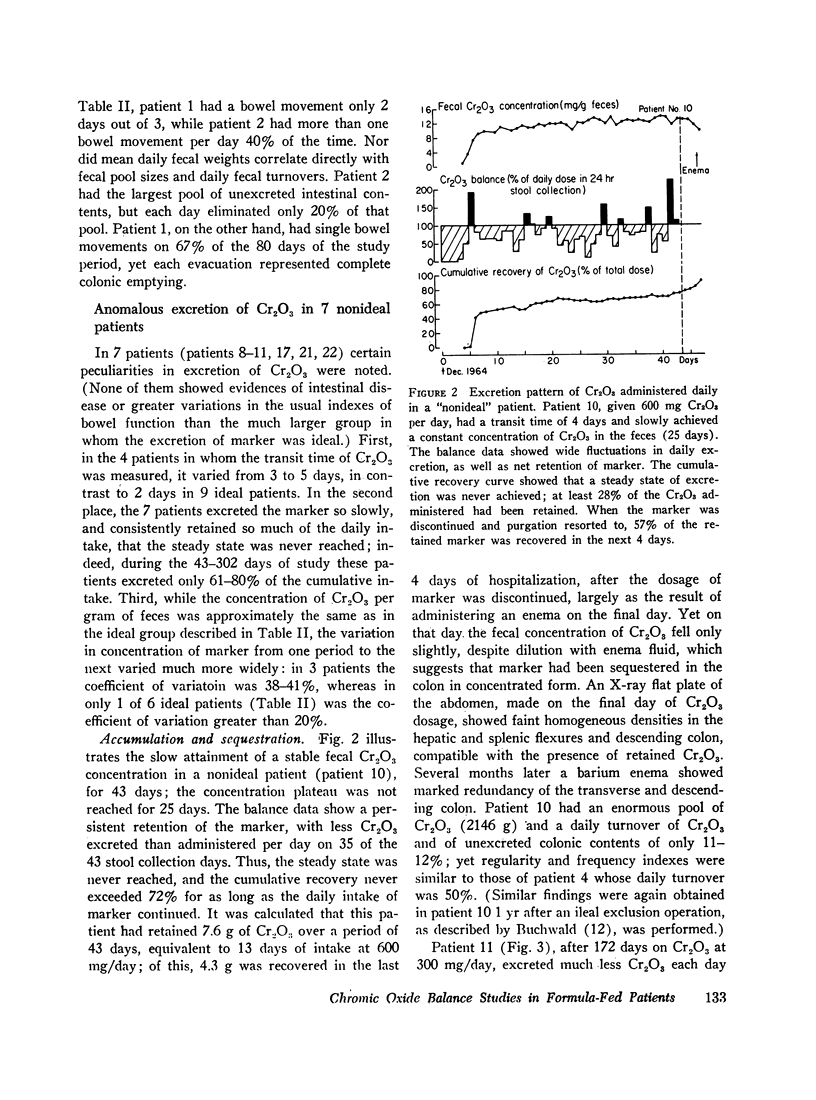
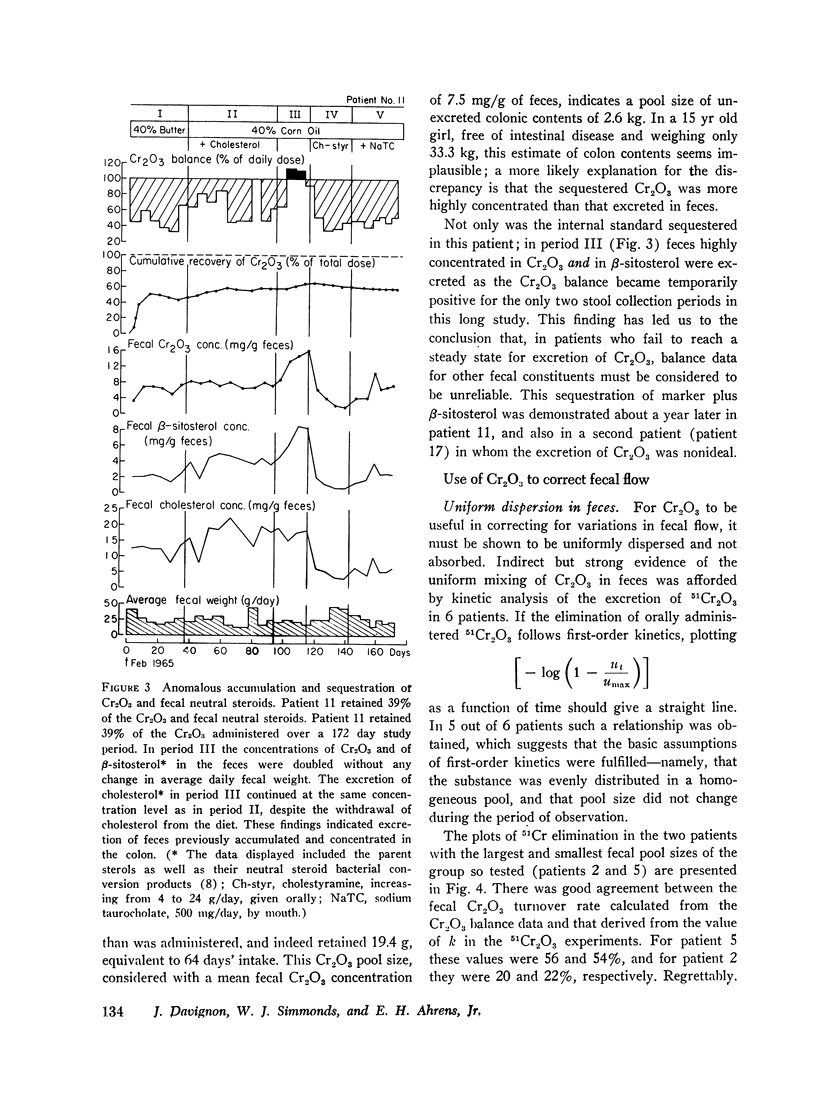
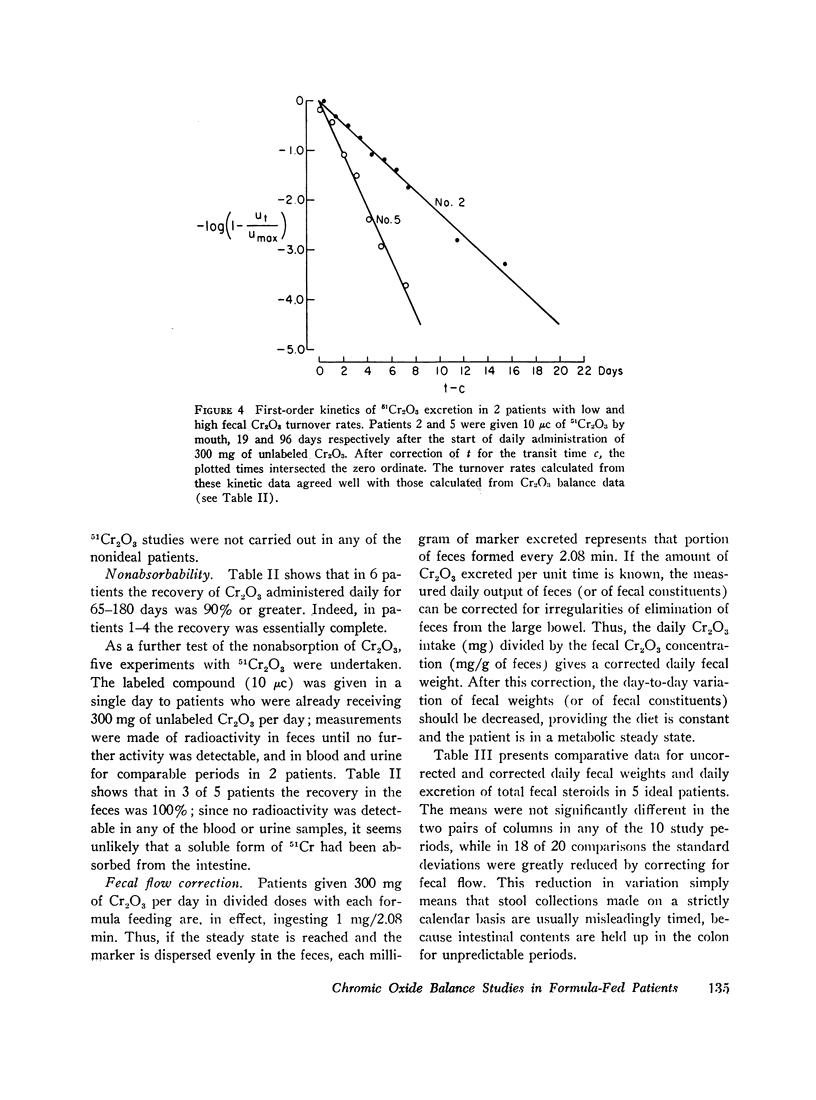
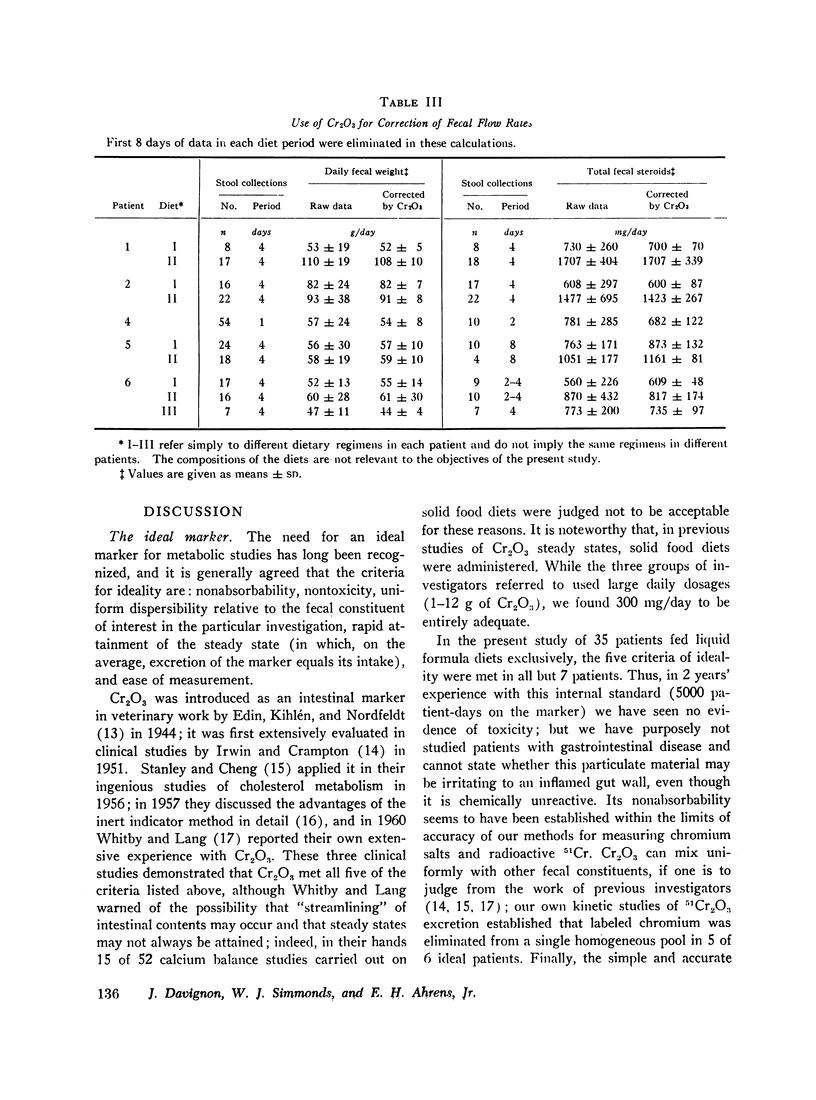
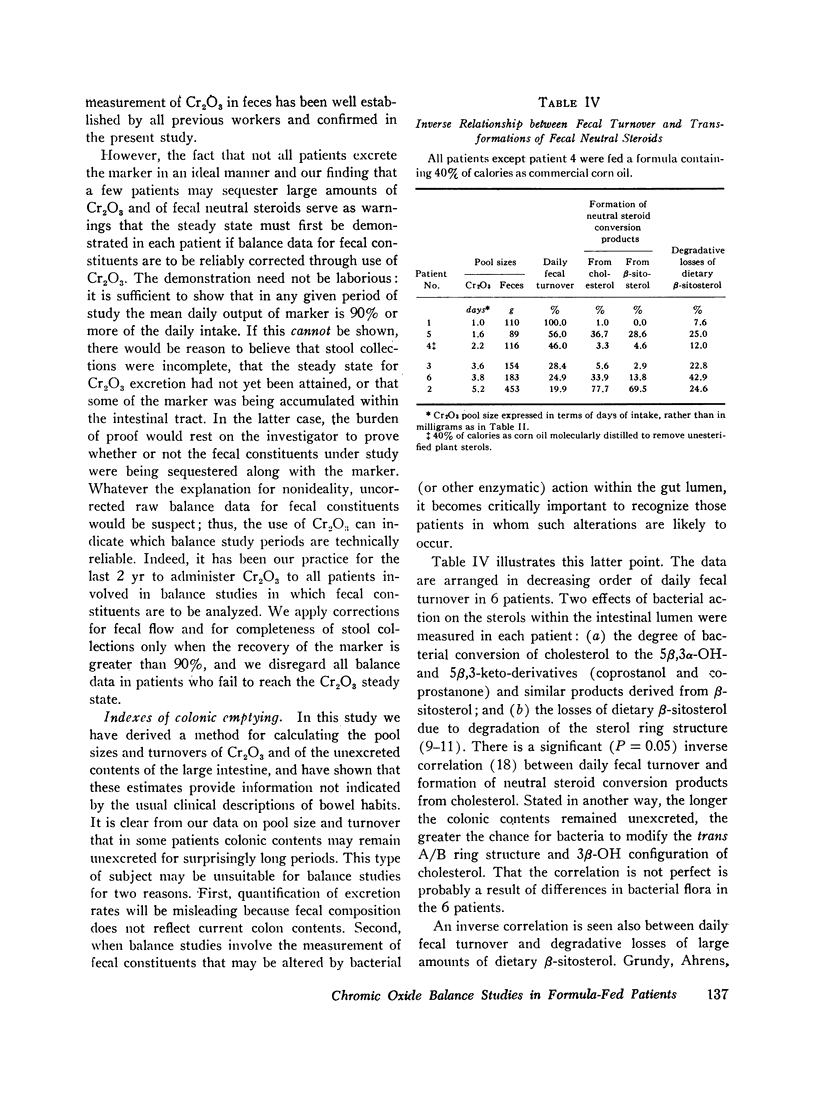
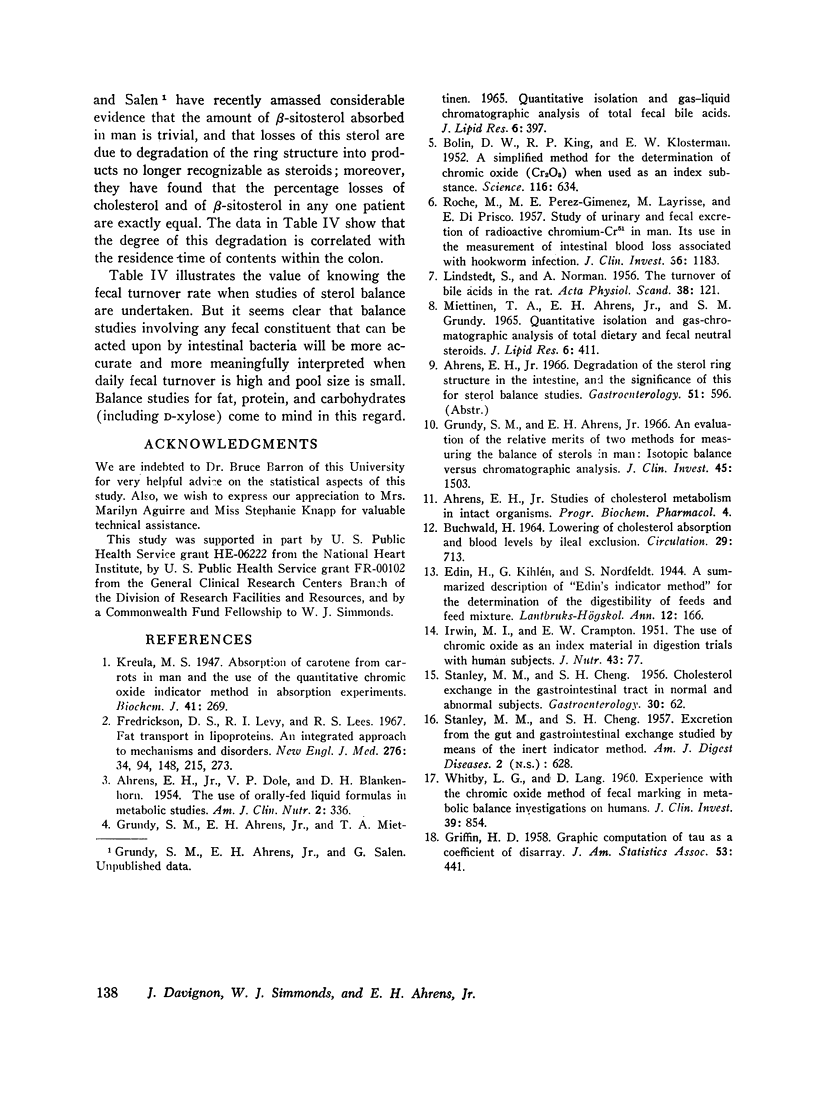
Selected References
These references are in PubMed. This may not be the complete list of references from this article.
- AHRENS E. H., Jr, DOLE V. P., BLANKENHORN D. H. The use of orally-fed liquid formulas in metabolic studies. Am J Clin Nutr. 1954 Sep-Oct;2(5):336–342. doi: 10.1093/ajcn/2.5.336. [DOI] [PubMed] [Google Scholar]
- BOLIN D. W., KING R. P., KLOSTERMAN E. W. A simplified method for the determination of chromic oxide (Cr2 O3) when used as an index substance. Science. 1952 Dec 5;116(3023):634–635. doi: 10.1126/science.116.3023.634. [DOI] [PubMed] [Google Scholar]
- BUCHWALD H. LOWERING OF CHOLESTEROL ABSORPTION AND BLOOD LEVELS BY ILEAL EXCLUSION. EXPERIMENTAL BASIS AND PRELIMINARY CLINICAL REPORT. Circulation. 1964 May;29:713–720. doi: 10.1161/01.cir.29.5.713. [DOI] [PubMed] [Google Scholar]
- Fredrickson D. S., Levy R. I., Lees R. S. Fat transport in lipoproteins--an integrated approach to mechanisms and disorders. N Engl J Med. 1967 Feb 2;276(5):273–concl. doi: 10.1056/NEJM196702022760507. [DOI] [PubMed] [Google Scholar]
- Grundy S. M., Ahrens E. H., Jr An evaluation of the relative merits of two methods for measuring the balance of sterols in man: isotopic balance versus chromatographic analysis. J Clin Invest. 1966 Sep;45(9):1503–1515. doi: 10.1172/JCI105457. [DOI] [PMC free article] [PubMed] [Google Scholar]
- IRWIN M. I., CRAMPTON E. W. The use of chromic oxide as an index material in digestion trials with human subjects. J Nutr. 1951 Jan;43(1):77–85. doi: 10.1093/jn/43.1.77. [DOI] [PubMed] [Google Scholar]
- Kreula M. S. Absorption of carotene from carrots in man and the use of the quantitative chromic oxide indicator method in the absorption experiments. Biochem J. 1947;41(2):269–273. doi: 10.1042/bj0410269. [DOI] [PMC free article] [PubMed] [Google Scholar]
- LINDSTEDT S., NORMAN A. The turnover of bile acids in the rat; bile acids and steroids 39. Acta Physiol Scand. 1956 Dec 31;38(2):121–128. doi: 10.1111/j.1748-1716.1957.tb01376.x. [DOI] [PubMed] [Google Scholar]
- MIETTINEN T. A., AHRENS E. H., Jr, GRUNDY S. M. QUANTITATIVE ISOLATION AND GAS--LIQUID CHROMATOGRAPHIC ANALYSIS OF TOTAL DIETARY AND FECAL NEUTRAL STEROIDS. J Lipid Res. 1965 Jul;6:411–424. [PubMed] [Google Scholar]
- ROCHE M., PEREZ-GIMENEZ M. E., LAYRISSE M., DI PRISCO M. E. Study of urinary and fecal excretion of radioactive chromium Cr51 in man; its use in the measurement of intestinal blood loss associated with hookworm infection. J Clin Invest. 1957 Jul;36(7):1183–1192. doi: 10.1172/JCI103514. [DOI] [PMC free article] [PubMed] [Google Scholar]
- STANLEY M. M., CHENG S. H. Excretion from the gut and gastrointestinal exchange; studied by means of the inert indicator method. Am J Dig Dis. 1957 Nov;2(11):628–642. doi: 10.1007/BF02231474. [DOI] [PubMed] [Google Scholar]
- WHITBY L. G., LANG D. Experience with the chromic oxide method of fecal marking in metabolic balance investigations on humans. J Clin Invest. 1960 Jun;39:854–863. doi: 10.1172/JCI104106. [DOI] [PMC free article] [PubMed] [Google Scholar]


